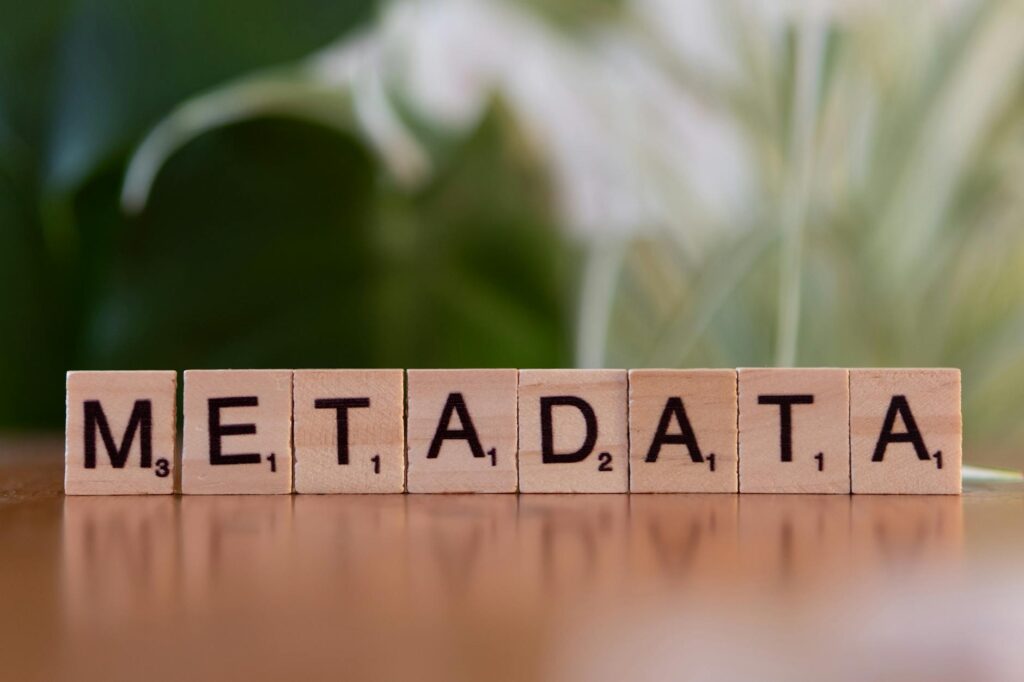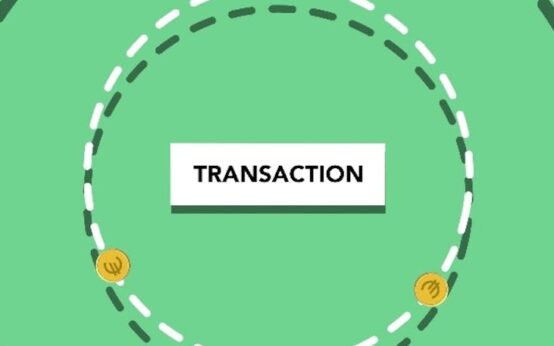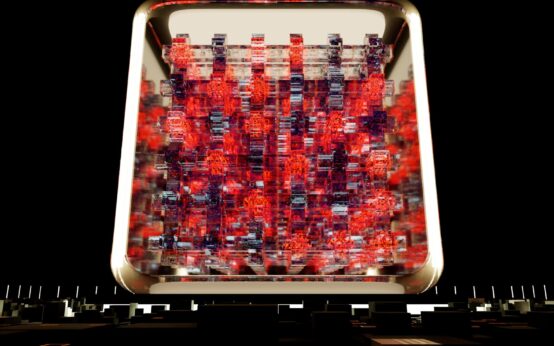If you’ve spent any time in the crypto space, you’ve heard about the ‘blockchain trilemma’. The idea is simple: you can have decentralization, security, or scalability, but you can only pick two. It’s a puzzle that has stumped some of the brightest minds. Ethereum is secure and decentralized, but it gets slow and expensive. Other chains are fast but often sacrifice decentralization. It feels like an impossible trade-off. But what if it isn’t? What if a different approach could change the game entirely? That’s the promise behind the Polkadot parachain architecture, a radical redesign of what a blockchain network can be.
Instead of one massive chain trying to do everything for everyone, Polkadot imagines a future with many specialized chains, all working together in harmony. It’s less like a single superhighway and more like an interconnected city, with roads, bridges, and specialized districts. This isn’t just a minor tweak; it’s a fundamental shift in thinking about how we build a decentralized internet. Let’s pull back the curtain and see how it all works.
Key Takeaways
- Polkadot’s architecture uses a central ‘Relay Chain’ for security and coordination, and connects numerous specialized blockchains called ‘parachains’.
- This ‘shared security’ model allows parachains to inherit the high-level security of the entire network without needing their own set of validators.
- Parachains are won through auctions, where projects lock up DOT tokens to lease a slot on the network.
- The system is designed for true interoperability, allowing different parachains to communicate and exchange data, not just tokens, using the Cross-Consensus Message (XCM) format.
- This structure aims to solve the blockchain trilemma by enabling scalability and specialization without compromising on security or decentralization.
So, What Is Polkadot, Really?
Before we get into the nuts and bolts of parachains, it’s important to understand what Polkadot is at its core. It’s not just another Bitcoin or Ethereum competitor. You can’t really build a dApp directly *on* Polkadot’s main chain in the same way you would on Ethereum. That’s a common misconception.
Think of Polkadot as a ‘Layer 0’ protocol. It’s the foundational layer upon which other, unique blockchains—the parachains—are built and connected. Its main job isn’t to process a million transactions for a new DeFi app. Its job is to provide security, consensus, and a way for all these connected chains to talk to each other. It’s the conductor of a very complex orchestra, ensuring every instrument plays in time and in tune, rather than trying to play every instrument itself. This fundamental distinction is the key to understanding everything that follows.
The Core Components of Polkadot’s Parachain Architecture
Polkadot’s structure can seem complex, but it boils down to a few key pieces working in concert. When you break it down, a clear and elegant design emerges. It’s a hub-and-spoke model, and it’s incredibly powerful.
The Relay Chain: The Heart of the Network
The Relay Chain is the central nervous system of Polkadot. It’s the ‘hub’ in our hub-and-spoke model. Its purpose is surprisingly minimalist. The Relay Chain is responsible for three critical things:
- Shared Security: This is its most important job. The Relay Chain has a large, robust set of validators staking DOT, the native token, to secure the network. This massive pool of security is then ‘shared’ or ‘rented out’ to all the connected parachains.
- Consensus: It finalizes blocks from all the parachains, creating a single, canonical state for the entire ecosystem. This means that a transaction on one parachain is considered final by every other parachain. It’s the single source of truth.
- Interoperability: It acts as the switchboard, passing messages between parachains. It doesn’t read the messages; it just ensures they get from Parachain A to Parachain B securely.
What the Relay Chain *doesn’t* do is just as important. It doesn’t handle smart contracts or complex application logic. This intentional limitation keeps it lean, efficient, and focused solely on its core tasks. By offloading all the ‘heavy lifting’ to the parachains, the Relay Chain avoids the congestion that plagues monolithic blockchains.
Parachains: The Specialized Workhorses
If the Relay Chain is the heart, parachains are the vital organs, each with a specialized function. A parachain (short for ‘parallelized chain’) is a sovereign, application-specific blockchain that runs in parallel within the Polkadot ecosystem. They are the ‘spokes’ connected to the Relay Chain hub.
Here’s the cool part: each parachain can be completely different. One could be a DeFi hub optimized for high-frequency trading. Another could be a decentralized identity solution. A third might be built for gaming, with custom logic for NFTs and in-game assets. This specialization is a superpower.
Instead of trying to be a jack-of-all-trades, a parachain can be a master of one. It can have its own governance, its own token, and its own rules, all while benefiting from the shared security of the main Relay Chain. They don’t have to worry about bootstrapping their own validator community from scratch—a monumental task that often leads to centralization. They just plug into Polkadot and inherit its security instantly.

Parathreads: The Pay-As-You-Go Option
Securing a full-time parachain slot can be expensive (more on that later). Not every project needs a dedicated, 24/7 connection to the Relay Chain. For these projects, Polkadot offers Parathreads.
Think of it like this: a parachain is like having a dedicated fiber optic line to your house—it’s always on and incredibly fast. A parathread is more like a pay-as-you-go mobile data plan. You get the same security and connectivity, but you only pay for it when you actually need to process a block. This provides a much lower-cost entry point for newer projects or applications with less consistent block production needs, making the ecosystem more accessible.
Bridges: Reaching the Outside World
Polkadot’s interoperability isn’t limited to its own ecosystem. Bridges are special parachains designed to connect Polkadot to external, established blockchains like Ethereum, Bitcoin, or Solana. These bridges allow for trustless asset and data transfers between entirely separate networks. This means you could, for example, use Bitcoin on a Polkadot DeFi parachain without relying on a centralized, custodial wrapper. It’s a key piece of the puzzle for creating a truly interconnected Web3.
How it All Fits Together: The Shared Security Model
The concept of shared security is arguably Polkadot’s most significant innovation. Let’s be real: launching a new Proof-of-Stake blockchain is incredibly difficult. You need to attract hundreds, if not thousands, of validators who are willing to stake a significant amount of capital to secure the network. It’s a chicken-and-egg problem. Without applications, there’s no value to secure; without security, no one will build applications.
Polkadot shatters this problem. By connecting to the Relay Chain, a parachain essentially outsources its security. The parachain’s ‘collators’ simply gather transactions and produce block candidates, but the heavy lifting of validating and finalizing those blocks is done by the Relay Chain’s validators. An attack on a single parachain would require an attacker to take on the economic security of the *entire* Polkadot network, which is a far more expensive and difficult proposition. This frees up development teams to focus on what they do best: building amazing products and user experiences.
Getting a Spot: The Parachain Slot Auction System
So, how does a project get to be a parachain? They can’t just plug in whenever they want. There’s a limited number of slots available, and they are allocated through a permissionless auction system.
It works like this:
- Projects that want to secure a parachain slot bid for it by locking up DOT tokens.
- These bids are placed in a unique type of auction called a ‘candle auction’, which has an unknown, randomly determined end time. This prevents ‘sniping’ at the last second and encourages bidders to place their best bid early.
- The winning project gets to lease the parachain slot for a set period (up to 96 weeks).
- Here’s the kicker: the DOT tokens they bid with are not *spent*. They are simply locked for the duration of the lease. At the end of the lease period, the project gets its full deposit of DOT back.
This system has a fascinating economic effect. It ensures that only well-funded and serious projects with significant community support can secure a slot. The locked DOT is effectively taken out of circulation, creating a powerful dynamic for the network’s native token.

Talking Across Chains: The Cross-Consensus Message Format (XCM)
Okay, so we have all these specialized chains running securely in parallel. That’s great for scalability. But how do they actually *do* anything together? This is where the Cross-Consensus Message (XCM) format comes in. XCM is more than just a standard for sending tokens back and forth. It’s a true messaging language.
Think of XCM as a universal language for blockchains. It allows one parachain to ask another to perform an action on its behalf, like swapping a token on a DEX, minting an NFT, or even voting in a governance proposal. This unlocks a level of composability and interoperability that’s simply not possible on other networks.
With XCM, a user on a gaming parachain could use assets from a DeFi parachain without ever leaving the game’s interface. A smart contract on one chain could call a function on a completely different chain. It’s the glue that transforms a collection of isolated blockchains into a single, cohesive, and powerful computing network. It’s what makes the whole greater than the sum of its parts.
Why Does This Architecture Matter? The Real-World Benefits
This all sounds technically impressive, but what does it mean for users and developers? The benefits of the Polkadot parachain architecture are tangible and address some of the biggest pain points in the blockchain industry today.
- True Scalability: By processing transactions in parallel across many chains, the network can handle a much higher throughput than a single-chain system. Adding a new parachain is like adding a new lane to the highway; it increases overall capacity.
- Specialization & Flexibility: Blockchains don’t need a one-size-fits-all approach. Parachains can be purpose-built for their specific use case, leading to far greater efficiency and performance. It’s the difference between a Swiss Army knife and a dedicated surgeon’s scalpel.
- Interoperability by Design: Cross-chain communication isn’t an afterthought or a clunky add-on; it’s baked into the very fabric of the network. This seamless communication is essential for building complex, multi-chain applications.
- Forkless Upgrades: Parachains can be upgraded without requiring a hard fork, which can be contentious and split communities. This is made possible by Polkadot’s on-chain governance and the Substrate framework, allowing for smoother and more frequent innovation.

Challenges and Considerations
Of course, no system is perfect. The Polkadot model isn’t without its challenges. The parachain auction model, while innovative, can create a high barrier to entry. The cost to secure a slot can be substantial, potentially boxing out smaller, less-funded teams. The parathread model helps mitigate this, but it remains a significant hurdle.
Additionally, the overall architecture is undeniably complex. Understanding the interplay between the Relay Chain, parachains, collators, and validators requires a steeper learning curve for developers compared to more straightforward smart contract platforms. However, this complexity is the price of the system’s immense power and flexibility.
Conclusion
Polkadot’s parachain architecture represents a bold and ambitious vision for the future of decentralized applications. It moves beyond the limitations of monolithic, general-purpose blockchains and embraces a future of collaboration and specialization. By providing a secure, scalable, and interoperable foundation, it empowers developers to build the next generation of Web3 without having to reinvent the wheel every single time.
It’s not a ‘better Ethereum’—it’s a completely different beast. It’s an ecosystem of ecosystems, a network of networks. Whether this multi-chain vision will ultimately become the dominant paradigm remains to be seen, but it’s undoubtedly one of the most compelling and well-engineered solutions to the blockchain trilemma we have today.
FAQ
What’s the difference between a parachain and a parathread?
A parachain has a dedicated, 24/7 slot connected to the Relay Chain, secured by winning an auction and leasing the slot. It’s ideal for applications with high, consistent activity. A parathread, on the other hand, is a pay-as-you-go model. It shares a pool of slots with other parathreads and only pays for block inclusion when needed, making it a more economical option for projects with less traffic.
Can any blockchain become a Polkadot parachain?
Not directly. A blockchain must be built using a framework compatible with Polkadot’s architecture, most commonly the Substrate framework. Substrate makes it relatively easy to build a custom blockchain that can plug into the Relay Chain. For existing, external blockchains like Bitcoin or Ethereum, they connect to the Polkadot ecosystem via specialized ‘bridge’ parachains rather than becoming parachains themselves.
Is the number of parachains limited?
Yes, there is a technical limit to the number of parachains that can be supported by the Relay Chain at any given time. This number is currently around 100, but it is expected to increase over time as the technology is optimized. This scarcity is what makes the parachain slot auctions competitive and valuable.



 Sentiment Analysis for Crypto: A Trader’s Ultimate Guide
Sentiment Analysis for Crypto: A Trader’s Ultimate Guide  NFTs: The New Key to Membership & Brand Loyalty | Guide
NFTs: The New Key to Membership & Brand Loyalty | Guide  Crypto Phishing: How to Protect Your Digital Assets
Crypto Phishing: How to Protect Your Digital Assets  Social Media on Blockchain: The Next Digital Frontier
Social Media on Blockchain: The Next Digital Frontier  What is a Flash Loan? A DeFi Deep Dive for Beginners
What is a Flash Loan? A DeFi Deep Dive for Beginners  Crypto Swing vs Day Trading: Which Style Wins?
Crypto Swing vs Day Trading: Which Style Wins?  Sentiment Analysis for Crypto: A Trader’s Ultimate Guide
Sentiment Analysis for Crypto: A Trader’s Ultimate Guide  NFTs: The New Key to Membership & Brand Loyalty | Guide
NFTs: The New Key to Membership & Brand Loyalty | Guide  Crypto Phishing: How to Protect Your Digital Assets
Crypto Phishing: How to Protect Your Digital Assets  Social Media on Blockchain: The Next Digital Frontier
Social Media on Blockchain: The Next Digital Frontier  What is a Flash Loan? A DeFi Deep Dive for Beginners
What is a Flash Loan? A DeFi Deep Dive for Beginners  Crypto Swing vs Day Trading: Which Style Wins?
Crypto Swing vs Day Trading: Which Style Wins?